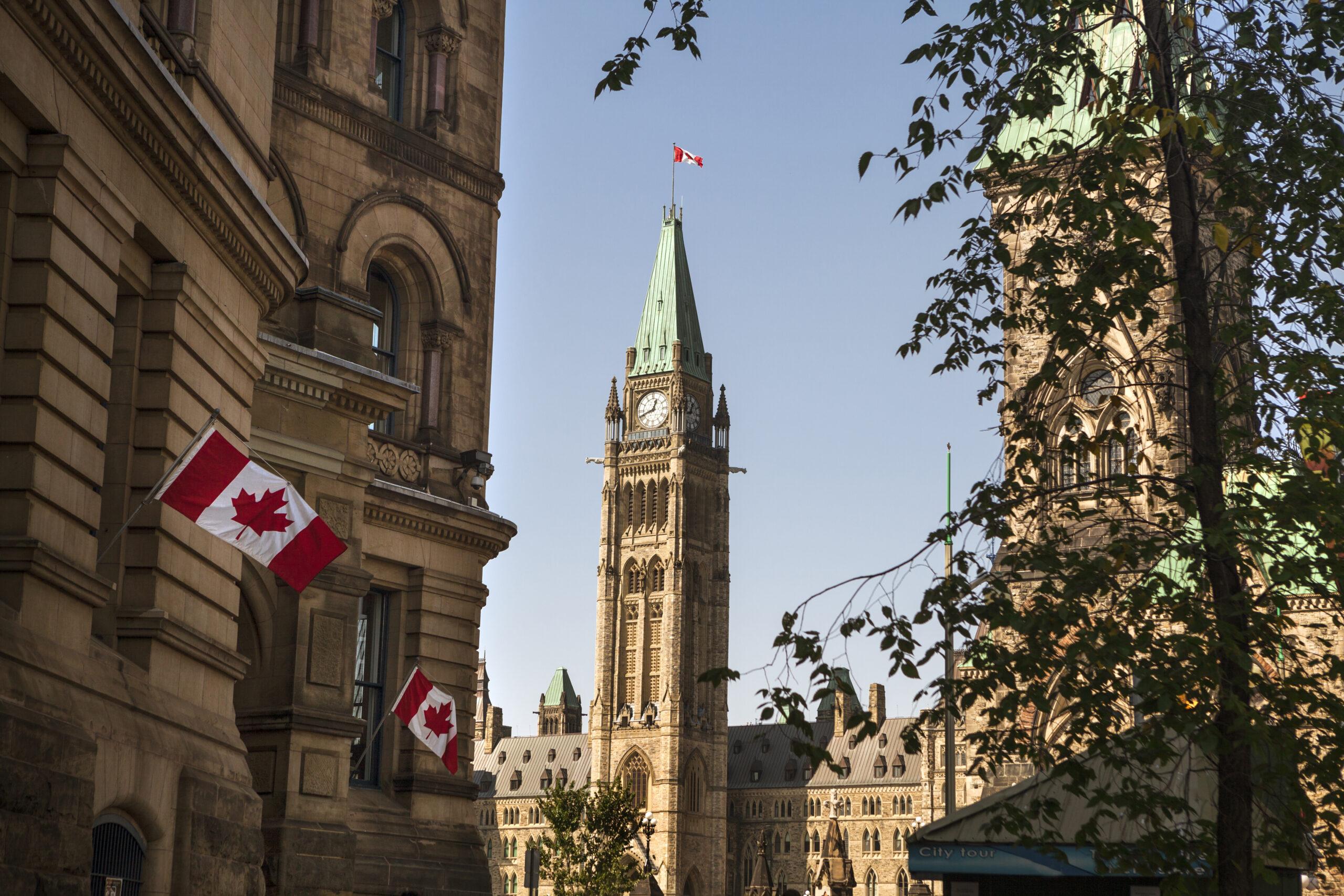


Greening Canadian Borders – Canada Considers Border Carbon Adjustments for Carbon-Intensive Imports
Greening Canadian Borders – Canada Considers Border Carbon Adjustments for Carbon-Intensive Imports
Border Carbon Adjustments (“BCAs”) are being explored by various countries to support climate change initiatives.[1] BCAs adjust the import prices of carbon-intensive goods to match the cost of locally produced goods impacted by carbon pricing regimes.
The Government of Canada announced in the 2021 Budget that it plans to develop BCAs as an element of Canada’s Climate Plan:
Border carbon adjustments make sure that regulations on a price on carbon pollution apply fairly between trading partners. If a different price on pollution is levied at source, the difference is accordingly applied on imports and exports between countries. This levels the playing field, ensures competitiveness, and protects our shared environment. An important part of advancing this work is ensuring a common understanding of border carbon adjustments and hearing views from interested Canadians, as well as working with Canada’s international partners.[2]
Canada’s Climate Plan includes reducing greenhouse gas (“GHG”) emissions 30% by 2030 and reaching net-zero emissions by 2050.[3] The Government anticipates that BCAs will help protect the competitiveness of key Canadian industries such as oil and gas, mineral production and chemicals while advancing Canada’s Climate Plan.[4]
The Role of Border Carbon Adjustments
A BCA is a tariff on imported goods based on their carbon content. BCAs would be applied to imports of products from exporting countries that either do not have their own domestic carbon pricing regimes or have weaker domestic carbon pricing regimes than the importing country. In effect, BCAs are intended to “level the playing field” between the costs of producing carbon-intensive goods in domestic and foreign markets. BCAs also reinforce domestic efforts to incentivize production of “environmentally friendlier” goods.[5]
BCAs have a critical role in deterring the “carbon leakage” that occurs when firms relocate production to countries without, or with weak, carbon pricing schemes. Relocation allows firms to avoid the added costs associated from compliance with stricter emissions regulations.[6] Carbon leakage results in global carbon emissions being redistributed to other countries rather than being reduced. In addition, domestic production and employment may decline from the relocation of manufacturing activities to foreign countries.
BCAs aim to equalize the basis of competition between foreign and domestically produced goods manufactured under different carbon compliance regimes. By raising the costs of imported products that are not fully carbon-priced in the exporting country, BCAs attempt to reflect the cost of producing similar goods at the carbon pricing level in the domestic market. BCAs also indirectly incentivize other countries to develop and meet more rigorous emission targets to avoid their exports being subject to BCAs.
Integrating BCAs within Canada’s Carbon Pricing Regime
The Supreme Court of Canada (“SCC”) recently upheld Canada’s domestic carbon pricing regime as set out in the Greenhouse Gas Pollution Pricing Act (“GGPPA”).[7] The GGPPA establishes a minimum national standard for carbon pricing emissions that all Canadian provinces and territories must meet.
The SCC stated that climate change was a threat to human life and Canada should approach the issue through national and international efforts.[8] The GGPPA decision appears to pave the way for a broad range of climate measures that could include BCAs.
Canada’s federal carbon pricing system under the GGPPA is known as the Output-Based Pricing System (“OBPS”). The OBPS allows the provinces and territories to design and implement their own carbon-pricing regimes, as long as the programs meet the minimum federal requirements. For provinces and territories that do not do so, the federal OBPS functions as a backstop to ensure they are subject to carbon pricing at the federal level.[9]
The CO2 emissions limit for each facility regulated under the OBPS is calculated using a formula in the Output-Based Pricing System Regulations.[10] A facility is required to pay for each tonne of carbon emitted above its limit for a year. The minimum price under the OBPS is currently C$40 per tonne of CO2, and will progressively increase to C$170 per tonne of CO2 by 2030.
An increase from C$40 to C$50 per tonne of CO2 under the OBPS has been estimated to result in a 1-5% increase in production costs for Canadian manufacturers of goods in the iron, chemical, petroleum, and steel industries.[11] In the absence of BCAs, carbon-intensive imported goods produced in countries that have carbon pricing at lower levels, or no carbon price at all, will have a cost advantage over Canadian goods.
It is expected that Canadian BCAs would be developed for imported products that compete with Canadian products affected by the OBPS. In practice, implementing BCAs in Canada may be a complex process. Some provinces use cap-and-trade systems, while others apply direct prices on carbon. Given the variance in carbon-pricing implementation across Canada, designing a Canadian BCA that equitably protects producers in all provinces and territories may prove challenging.
International Consideration of BCAs
The European Union is expected to announce its proposed “Carbon Border Adjustment Mechanism” (“CBAM”) regulations in July 2021, and they could enter into effect as early as 2023.[12] The European Parliament and member states will need to approve the CBAM proposal before it comes into force.[13]
At the June 2021 G7 Summit in the United Kingdom, leaders “acknowledge[d] the risk of carbon leakage” and committed to “work collaboratively to address this risk and to align our trading practices with our commitments under the Paris agreement.”[14] However, no consensus was reached in support of BCAs. The strongest opposition to BCAs amongst the G7 countries currently comes from the United States and Japan, the only G7 countries without national carbon-pricing regimes.[15]
Designing BCAs that are World Trade Organization Compliant
BCAs will almost certainly be scrutinized under the World Trade Organization’s dispute settlement regime. The General Agreement on Tariffs and Trade (“GATT”) provides that countries cannot use tariffs to discriminate in favour of domestic producers of goods.[16] A WTO-compliant BCA will need to be non-discriminatory, applying clear and consistent principles for all countries. A WTO-compliant BCA will likely also need to account for carbon pricing already applied in the exporting country to avoid placing domestically produced goods at a market advantage relative to the imported goods.
Alternatively, if a BCA fails the non-discrimination requirements under the GATT, it may still be justified under one of the General Exceptions in Article XX of the GATT.[17] They allow a trade measure to be exempt from the GATT where necessary for the protection of human, animal or plant life, or where necessary for the conservation of exhaustible natural resources.[18] Clean air has been recognized as an exhaustible resource.[19] However, a trade measure cannot be used as an excuse for arbitrary or unjustified discrimination or to disguise a restriction on international trade.[20]
Canadian Government Consultation Process
The Government has announced that it will begin a BCA consultation process with exporters and importers of carbon-intensive goods in summer 2021. Broader public consultations are expected later in fall 2021.[21] Firms that produce and sell carbon-intensive products may want to participate in these consultations to ensure that level playing field, regulatory burden and other considerations are fully understood by the Government.
TRC-Sadovod will provide updates on the development of Canadian and international BCAs in upcoming bulletins.
[1] Canada, the United States, the European Union, and the United Kingdom are among the jurisdictions considering the use of BCAs in the future.
[2] Government of Canada Department of Finance, Budget 2021: A recovery Plan for Jobs, Growth, and Resilience (Ottawa: Department of Finance, 2021) at 176 [Budget 2021].
[3] For more information about Canada’s net-zero emissions initiative, please refer to TRC-Sadovod’s bulletin Canada Legally Commits to Net-Zero Emissions by 2050.
[4]Government of Canada, “Progress towards Canada’s greenhouse gas emissions reduction target” (accessed 12 July 2021)
[5] Budget 2021 at 176.
[6] European Commission, “Carbon leakage” (accessed 12 July 2021)
[7] References re Greenhouse Gas Pollution Pricing Act, 2021 SCC 11.
[8] For more information, please refer to TRC-Sadovod’s bulletin Supreme Court of Canada Upholds Federal Carbon Pricing Regime.
[9] Ontario, New Brunswick, Manitoba, Prince Edward Island, Saskatchewan, Yukon, and Nunavut rely on the federal OBPS, although New Brunswick and Ontario are currently in the process of transitioning from the federal OBPS to their own provincial carbon pricing programs.
[10] Output-Based Pricing System Regulations, SOR/2019-266, ss. 36-43.
[11] International Monetary Fund, “Four Charts on Canada’s Carbon Pollution Pricing System” (accessed 12 July 2021)
[12] European Parliament, “Legislative Train Schedule: A European Green Deal” (accessed 12 July 2021)
[13] European Parliament, “Ordinary legislative procedure” (accessed 12 July 2021)
[14] The White House, “Carbis Bay G7 Summit Communique: Our Shared Agenda for Global Action to Build Back Better” (accessed 12 July 2021)
[15] World Bank, “Pricing Carbon” (accessed 11 July 2021)
[16] General Agreement on Tariffs and Trade, 30 October 1947, Article II and Article III, UNTS 187 (entered into force 1 January 1948) [GATT].
[17] GATT, Article XX.
[18] GATT, Article XX (b) and Article XX (g).
[19] World Trade Organization, “WTO rules and environmental policies: GATT exceptions” (accessed 11 July 2021)
[20] World Trade Organization, “WTO rules and environmental policies: GATT exceptions” (accessed 11 July 2021)
[21] Budget 2021 at 176.
by Neil Campbell, Lisa Page, Talia Gordner and Adelaide Egan (Summer Student)
A Cautionary Note
The foregoing provides only an overview and does not constitute legal advice. Readers are cautioned against making any decisions based on this material alone. Rather, specific legal advice should be obtained.
© TRC-Sadovod LLP 2021
Insights (5 Posts)View More
Structuring Mortgage Investment Corporations in Canada
An overview of structuring Mortgage Investment Corporations or "MICs" in Canada
Working for Workers Four Act, 2023: How Ontario’s Proposed Changes Will Impact Employers
This bulletin discusses new employer obligations for job postings, tip and wage protections, and more as proposed in the Working for Workers Four Act, 2023.
Plan for the Ban: What the Federal Court’s Decision ACTUALLY Means for Your Business – Your Questions Answered
The Court decision in Responsible Plastic Use Coalition v Canada struck down Canada's decision to add plastic manufactured items to the List of Toxic Substances
Beware of Bystanders: Ontario Court Expands the Scope of Negligence Claims
Ontario Court expands scope of negligence claims to include innocent bystanders.
CSA and CIRO Provide Update on Short Selling Regulatory Regime Review
On November 16, 2023, the CSA and CIRO published CSA/CIRO Staff Notice 23-332 Summary of Comments and Responses to CSA/IIROC Staff Notice 23-329.
Get updates delivered right to your inbox. You can unsubscribe at any time.






